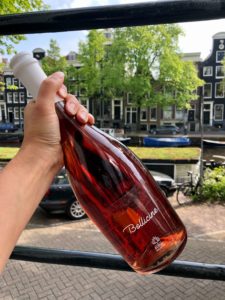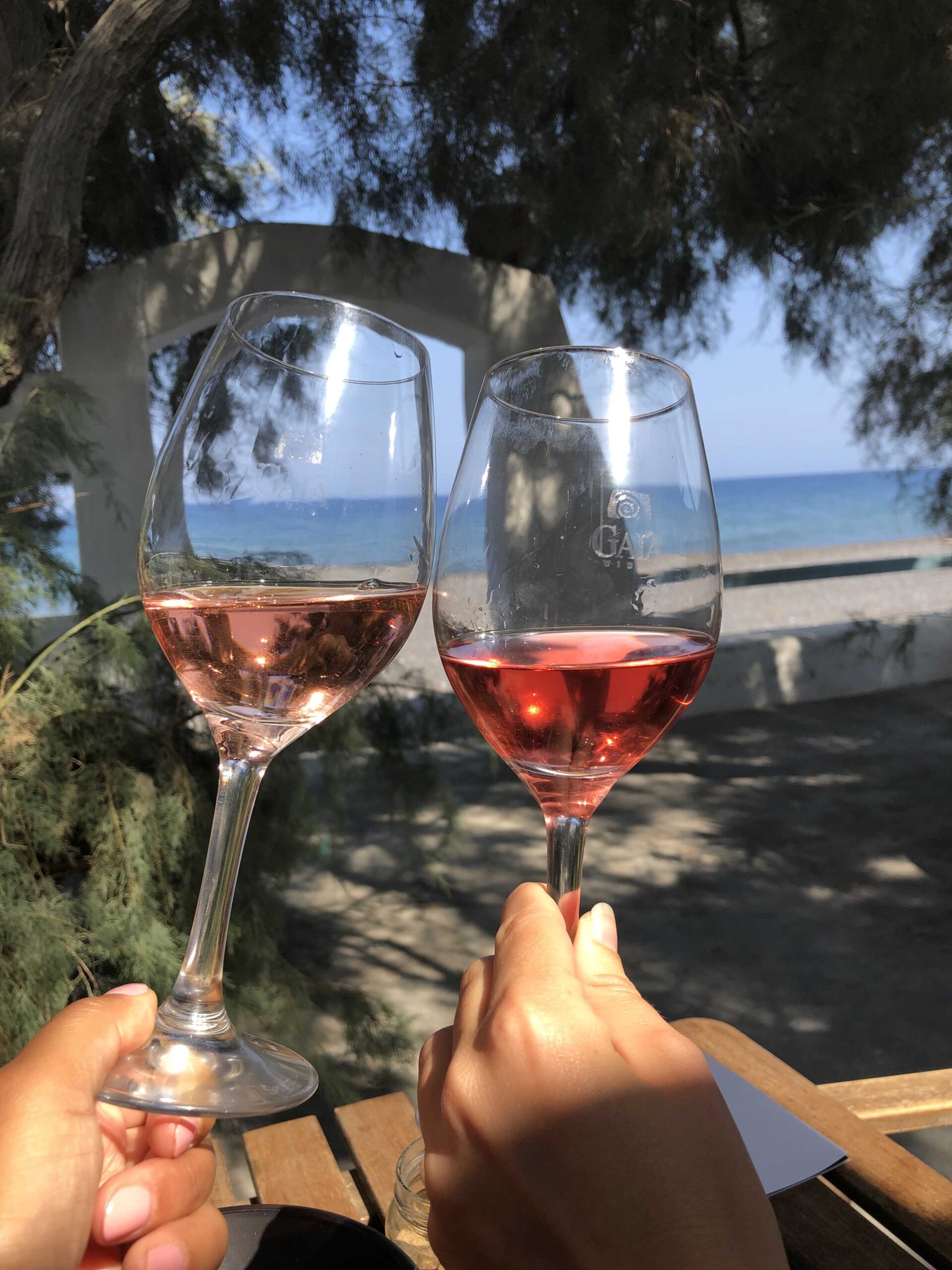I really like rosé. Not the cheap way – nice full glass with ice cubes. Not the snobbish way: “I only drink Provence and if the rosé doesn’t have the colour of an onion peel I wave at it”. Nice rosé, well made, with or without a fizz, I can appreciate it.
Surely a good glass of rosé is the first thing you long for when at the end of April that watery sunshine comes to warm you after what seemed an everlasting winter.
Rosé all the way back
In the beginning, in the Greek Empire, almost all wines were rosé. Grapes, blue and white, were transformed into wine and then diluted with water. I can hear you think: yummy.
In the sixth century B.C., the Greeks brought their pink wines to Marseilles. From here they were spread all over the Mediterranean and this is why Provence owes its fame for rosé wines.
In the 19th century, Bordeaux was the birthplace of the Clairet. This rosé became extremely popular in the high circles of England. At that time, rosé was associated with luxury, freedom and sunshine. In southern France, drinking a glass of rosé was a real treat. Chilled while sitting in the sun, as an aperitif before dinner and as a thirst-quencher.
Halfway through the 20th century, rosé lost its good reputation because cheap sweet rosé wines, that had nothing to do with quality, were marketed . In serious circles, drinking a glass of rosé was like swearing in church.
From the year 2000 onwards, the reputation of rosé slowly climbed out of the mire. Celebrities showed rosé wines, magnums were spotted at pool parties, chic terraces had rosé back on their menu.
How rosé is made
There are several ways to make rosé. I’ll discuss them all briefly.
- Blue grapes are destalked and bruised. This is followed by a brief soaking of the peels and pips. After 1 or 2 days the whole is pressed. The whole becomes pink. This is how, for example, Clairet is made.
- The saignée method ferments the juice, skins and pits together. During the alcoholic fermentation the juice turns pink. After not too long, the winemaker allows a part of the juice to drain out of the barrel. This juice continues to ferment without the peels and pits. The rest is used to make red wine.
- In Provence, all grapes are pressed gently. The wine comes out pale pink and is further fermented as a white wine.
- Sometimes white and red wine is blended into a rosé wine. However, this is not permitted in Europe, except in the Champagne region. What is allowed is to ferment blue and white grapes together.
Wines I have tried

Les Vilaines rosé from Provence
Beautiful light coloured rosé, inspired by femininity and made by four sexy women. A blend of Syrah, Grenache and Cinsault where the latter grape provides the gastronomic touch.
In the glass the wine is fresh, has a mineral tone. Soft and fruity, fleshy on the palate, temperamental and thirst-quenching.
Nice glass for the coming months.

Rosato Bolliccine AgrinSalento
Spicy pink color. Nice bottle. Photogenic.
In the glass a steady bubble. Very fruity nose, red fruit and some notes of dried fruit. Juicy and full, sweet and sour cherry, nice crackling acidity.

